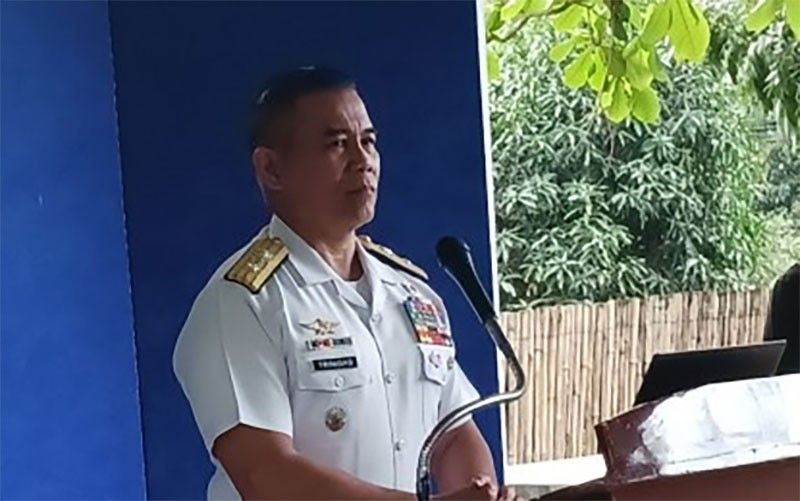Navy won’t recognize China fish ban in Philippine waters

MANILA, Philippines — Filipino fishermen may go about their business in the country’s territorial waters unmolested and assured of protection from the Philippine Navy, which vowed not to recognize Beijing’s unilateral four-month-long fishing ban in the South China Sea.
“The Philippine Navy does not recognize this provocative statement nor will we be deterred in performing our mandate of securing the welfare of Filipino wherever he/she is – on land or at sea,” Philippine Navy spokesman for the West Philippine Sea Commodore Roy Vincent Trinidad said yesterday.
Trinidad said the Navy has stepped up patrols in the West Philippine Sea, especially in areas where most cases of Chinese harassment of Filipino fishermen had taken place like in Panatag (Scarborough) Shoal and in Ayungin (Second Thomas) Shoal.
Intensified patrols by the Philippine Navy will also cover the Northern islands in the archipelago.
The Philippine Coast Guard (PCG) and the Bureau of Fisheries and Aquatic Resources (BFAR), for their part, will be conducting “rotational deployment” in Panatag Shoal to protect Filipino fishermen from possible Chinese harassment.
In an interview with “Storycon” on One News, PCG spokesman Commodore Jay Tarriela said the deployment is in accordance with instructions from National Security Adviser (NSA) Eduardo Año.
“Let me clarify it. The fishing moratorium is 12 degrees latitude up north. Basically, what will hit the fishing moratorium is our traditional fishing area up north, which is Bajo de Masinloc, our traditional fishing area,” Tarriela said, referring to Panatag Shoal by its local name.
“I cannot say it is round-the-clock,” he said, referring to the extent and duration of the deployment. “But definitely, (it will be) alternate between the BFAR and Coast Guard. There are so many things to consider, the legit requirements of operations of the vessel. But every once in a while, the Coast Guard and BFAR will be deploying our vessels to ensure our presence in Bajo de Masinloc.”
The Philippine Navy has monitored at least 122 Chinese boats in various areas in the West Philippine Sea, especially around the Panatag, Ayungin and Escoda (Sabina) Shoals. The number is actually smaller than the 153 reported the previous week from May 14 to 20, data showed.
From May 21 to 27, 36 Chinese vessels were spotted in the vicinity of Pag-Asa Island comprising a People’s Liberation Army Navy (PLAN) warship, a China Coast Guard (CCG) ship and 34 maritime militia vessels (MMVs).
Also spotted by the Philippine Navy were five CCG vessels – each around Panatag and Ayungin. Fourteen MMVs were monitored in Panatag and 17 in Ayungin, where a Philippine military outpost on the beached BRP Sierra Madre is located.
The Philippine Navy has also reported the presence of four PLAN warships, two CCG vessels and 30 MMVs around the Escoda Shoal.
It was at the height of the joint Philippine-US Balikatan exercises in the last week of April to early this month that Chinese presence in the West Philippine Sea had significantly gone up, according to the Philippine Navy.
No more monster ship
Based on PCG monitoring, Tarriela said only two Chinese coast guard vessels and 19 MMVs were in Bajo de Masinloc.
“The so-called monster China coast vessel 5901 is no longer there,” Tarriela said.
“We rely on the AFP (Armed Forces of the Philippines) whenever they have the report to the totality of the Chinese maritime militia… the navy vessels as well,” he said.
He also said the CCG would usually only deploy its so-called monster vessel whenever there are joint Philippine-US military exercises.
“There are already numerous instances that they deployed their monster ship to threaten here in the Philippines. The first one was in 2022. They did it in 2022 when we had exercise with US coast guard. Whenever there is an exercise, they deployed. This is always related to intimidation to discourage again any civilian convoy to any part of the WPS,” Tarriela said.
He explained that the PCG’s attention is on the Chinese because they are always employing intimidation against the Filipinos.
The PCG, Tarriela said, has encountered Vietnamese ships in Philippine waters.
“But when we used our PA system, they pulled out accordingly. It means that they respect the Philippines,” he said.
“The moment that we challenge the Chinese military, the Chinese naval vessels would also come. From the behavior itself it shows how bully the Chinese are. How they look at the Filipino fishermen, that they totally have sovereignty over our territory,” Tarriela said.
“Whenever we pass Vietnamese fishermen, we usually communicate with them. We are not water-cannoned by Vietnam, Malaysia and Brunei,” he pointed out.
The Department of Foreign Affairs (DFA) earlier filed a note verbale to protest China’s unilateral imposition of a fishing moratorium.
The DFA said it was protesting the ban “insofar as it includes the Philippines’ maritime zones over which the Philippines has sovereignty, sovereign rights and jurisdiction.”
Wave the flag
As part of the commemoration of National Flag Day and in the face of China’s growing belligerence, Speaker Ferdinand Martin Romualdez yesterday urged Filipinos to proudly and bravely wave the national flag.
“In these times, when we face challenges and pressures from outside forces, let us not be daunted. The world may be vast and sometimes overwhelming, but our spirit as Filipinos is unbreakable,” Romualdez said in his National Flag Day message.
“We may encounter bullying or intimidation from foreign nations, but let us stand tall and wave our flag with pride. Let it be known that the Filipino spirit is resilient and resolute,” Romualdez said.
He said the flag is a symbol of sovereignty and unity.
“It is a reminder that we are a nation capable of greatness. Let us come together, shoulder to shoulder, and face any adversity with the same bravery our ancestors showed. By standing firm and united, we can overcome any challenge that comes our way,” he stressed.
He said Filipinos should reflect on what the national flag represents. “Let us renew our commitment to our nation, to our values and to each other. Let us teach our children the importance of love for country and the significance of our flag,” he said.
“Wave your flags high, with hearts full of pride. Let the colors of our flag inspire hope and strength for all. Together, let us build a future where our nation is respected and admired, not just for its beauty, but for the strength and unity of its people,” he said.
He said the celebration of National Flag Day reminds Filipinos “of the deep sense of pride and patriotism that our flag embodies.”
“More than just a symbol, the Philippine flag is a reflection of our history, our struggles and our triumphs. As we stand beneath the red, white, blue and yellow, let us remember the countless Filipinos who fought for our freedom and sovereignty,” he said.
“They sacrificed their lives so that we could enjoy the peace and liberty we have today. Their spirit lives on in each of us, and it is our duty to honor their legacy by upholding the values they stood for,” he added. — Delon Porcalla
- Latest
- Trending




























